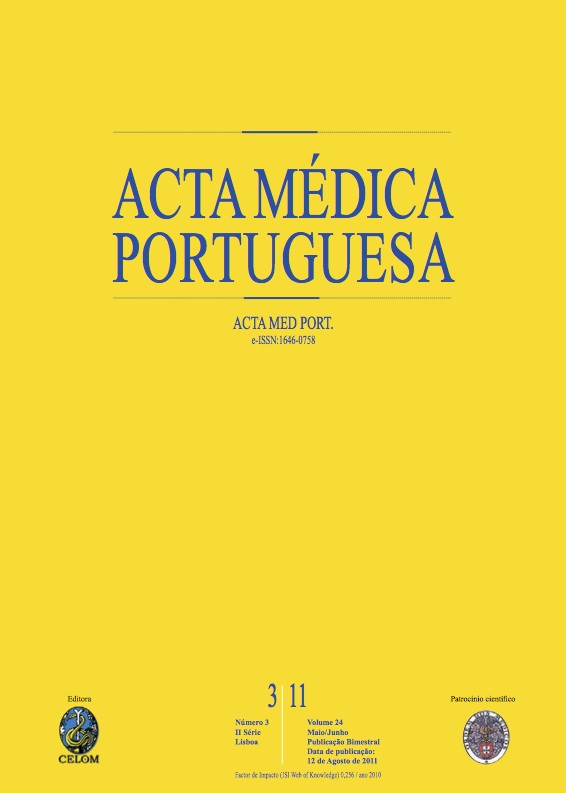Screening tools of somatization in general and somatoform disorders in primary care.
DOI:
https://doi.org/10.20344/amp.460Abstract
In this article a critical review concerning screening tools to assess medically unexplained symptoms, in primary care settings is made. Once the relevance of that screening is justified, the authors analyse: 1) the somatization dimensions presented by multi-dimensional tools; 2) the measures that primarily assess the severity of symptoms; 3) the available inventories of medically unexplained symptoms. The psychometric characteristics of each screening tool are analysed, the samples and the gold standard measures used in each validation study are referred to, as well as the cut-offs, if previously calculated. At present six screening tools for physical symptoms have a Portuguese translation, four of them do not discriminate explained and unexplained symptoms, another one was not validated in the Portuguese context and finally the SOMS-2 which discriminates unexplained symptoms and has been validated for use in primary care.Downloads
Downloads
How to Cite
Issue
Section
License
All the articles published in the AMP are open access and comply with the requirements of funding agencies or academic institutions. The AMP is governed by the terms of the Creative Commons ‘Attribution – Non-Commercial Use - (CC-BY-NC)’ license, regarding the use by third parties.
It is the author’s responsibility to obtain approval for the reproduction of figures, tables, etc. from other publications.
Upon acceptance of an article for publication, the authors will be asked to complete the ICMJE “Copyright Liability and Copyright Sharing Statement “(http://www.actamedicaportuguesa.com/info/AMP-NormasPublicacao.pdf) and the “Declaration of Potential Conflicts of Interest” (http:// www.icmje.org/conflicts-of-interest). An e-mail will be sent to the corresponding author to acknowledge receipt of the manuscript.
After publication, the authors are authorised to make their articles available in repositories of their institutions of origin, as long as they always mention where they were published and according to the Creative Commons license.









